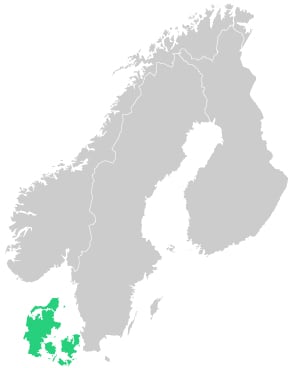read more about accounting consulting
Over the course of the year, there are three deadlines for the payment of tax for companies. Two of them are for the mandatory ordinary tax on account, calculated by the Danish Customs and Tax Administration, and then there is the voluntary tax on account, which, as a company, you are in full control of:
- First instalment – ordinary tax on account: deadline 20 March in the current fiscal year
- Second instalment – ordinary tax on account: deadline 20 November in the current fiscal year
- Third instalment – voluntary tax on account: deadline 1 February of the subsequent fiscal year
Voluntary tax payments on account, on top of the ordinary tax on account, may also be made in March and November. I will elaborate on this below.
The ordinary tax on account
In 2019, the ordinary tax on account constitutes a sum equal to half of the average of your company's actual tax for the 2015, 2016 and 2017 tax years. That is 11% of the average income over those years, where 50% must be paid in March and 50% in November.
If the company is expecting low earnings in 2019, you can request a reduction in the instalments from the Danish Customs and Tax Administration via E-tax for businesses. This option is available right up to the deadline for the payment of the first and second instalments in March and November, respectively.
If your company is part of a joint taxation scheme, the total tax on account is paid by the management company.
The voluntary tax on account
If you estimate that the calculated ordinary taxes on account are not sufficient to cover the actual taxes for the tax year, you may choose to supplement the ordinary taxes on account with voluntary payments. You can choose whether to make a voluntary account payment in either March, November, or both March and November.
Furthermore, you can choose whether to make the so-called third voluntary payment, which must be paid by 1 February in the subsequent year. This later deadline of 1 February 2018 makes it possible for you, as a company, to have an accurate picture of the profits for 2017 and thus know what the total tax for the 2017 tax year will be. This calculation can be difficult to make as early as November, which is why, for many companies, it is an advantage to have the option of paying the third instalment which is not due until a month after the reporting period.
A voluntary payment must be created via E-tax for businesses before you transfer money as a company – otherwise the Danish Customs and Tax Administration will return the money.
read more about accounting consulting
Additional charge when paying voluntary tax on account
If you choose to pay voluntary tax on account, you must be aware that a voluntary payment in March has a charge credited to it, whereas there is an additional charge for voluntary payment in both November and February. For the 2018 tax year, the additional charges are as follows:
- Payment in March: 0%
- Payment in November: 0%
- Payment in February: 0.5%
This means that if your company makes a deposit of DKK 100,000 no later than 1 February 2019, an additional interest charge of DKK 500 will be added. If the expected outstanding tax amounts to DKK 100,000, you must therefore pay DKK 100,500.
However, this is a much smaller interest charge than you would have to pay as a charge on outstanding taxes in November. For the 2018 tax year, the outstanding tax surcharge is 2.8% and is non-deductible. If you pay by February 1, 2019, you thus save 2.3% (2.8-0.5) on your tax payment for the 2018 income year.
It is my assessment that if your company has the necessary excess liquidity, it should definitely consider paying the outstanding tax as an on account payment in February and "settle" for 0.5% in outstanding tax surcharge. That way, you avoid having to pay higher and non-deductible interest.
Do you need advice?
At Azets, we have experienced consultants who can advise you on everything within accounting, VAT and tax.

